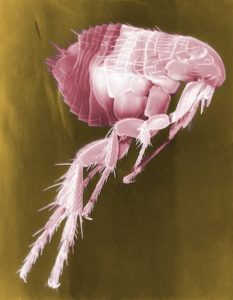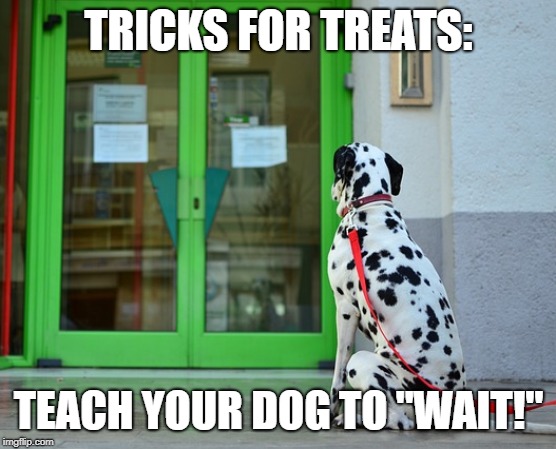Oh no! Your dog has fleas. What should you do?
While this question poses many solutions, it is important to talk to your veterinarian about what solution is best for you and your pup. However, understanding what fleas are and why they can be a huge problem is a crucial first step. In fact, the best way to prepare yourself to get rid of, and prevent, flea infestations is to talk to your veterinarian, and become educated on how to handle flea situations.

What are fleas, and how do I know if my dog has fleas?
Fleas are very small parasitic insects that feed on the blood of a host. They typically have flattened-looking bodies that are a red/brown color. No they can’t fly, but they can jump impressively far and high, and easily latch onto your pup. Flea bites can cause intense itching and discomfort for you and your dog. The first sign of flea infestation on your pup is usually constant scratching and itching. You may even be able to see them running around your dogs skin near the roots of their fur. If your dog has a thicker coat, another way to determine a flea infestation is to check for flea dirt.

What’s the difference between flea dirt, and regular dirt?
A neat trick to determine if the dirt on your pups skin is from fleas is to take a q-tip and swab the dirt off your dogs skin. Try to get the dirt onto a paper towel, and use a small amount of water to break up the dirt on the paper towel. If the dirt turns red in color, it is likely that there is blood in the dirt; thus, a good indicator of flea remnants.
![]()

Okay. Why are fleas such a big deal, though?
Fleas aren’t only annoying blood sucking pests, but they can cause medical issues for you and your pup. As if the immense discomfort from fleas isn’t enough, your dog could develop anemia, flea allergies, and even tapeworms! Most importantly, never delay talking to your vet if you think you have a flea problem. Delaying your visit over the worry of cost can create more costs for you in the long run.

All the signs are present, so how do I get rid of these horrible creatures?
We cannot stress the importance of talking to your vet! However, there are some over-the-counter products you can purchase to get a head start on getting rid of those fleas. While there are many flea collars and shampoos that will aid in your situation, we here at Dog Parent Academy have found that the best way to kill all the fleas on your dog is by using Capstar:Capstar Flea Tablets for Dogs and Cats, 6 Count, 2-25 lbs
Capstar for Big Dogs
Capstar for Dogs over 25 lbs GREEN, 12-Tablets by Novartis
Capstar is a pill that will kill all of the fleas and eggs on your dog within 6 hours of application. Your dog will only need one tablet, so definitely keep the rest at home if there is ever another infestation. However, if you have multiple pets at home, make sure to treat all of your animals even if they don’t show symptoms of infestation.
That’s all?
Well, no. After you treat your pets for fleas, you need to treat your home as well. Fleas will make temporary homes in your carpets and other linens. Therefore, we recommend using products such as carpet powder, and linen sprays. These are our favorite products for treating the house:
Carpet Powder
BioSpot Active Care Carpet Powder
Linen Spray


Vet’s Best Flea and Tick Home Spray | Flea Treatment for Dogs and Home | Flea Killer with Certified Natural Oils | 32 Ounces
It is also recommended to wash all pillowcases, sheets, blankets, and towels in your washing machine with soap and the hottest water possible – followed by a trip in the hot dryer. The heat and soap will help to suffocate the fleas further.

How do I prevent flea infestations from happening again!?
Luckily, preventing fleas from latching on to your pup is way less of a hassle than trying to get rid of them. Even though there are many over-the-counter flea products, we recommend prescription products that your veterinarian can offer you. With prescription preventatives, you will be better prepared to keep fleas out of your home and away from your pup. Some of the most popular prescription products are NexGuard, Bravecto, and Simparica – these will protect your dog from ticks, as well! Most of these products are given once a month, or once every 3 months, and some of them are even presented as tasty treats instead of pills.

















